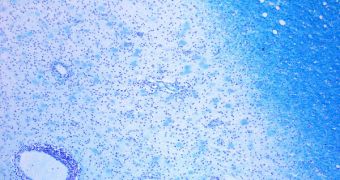Scientists at the University of Cambridge made a significant discovery when they noticed that alemtuzumab, a drug created for the express purpose of fighting leukemia, in fact worked best against multiple sclerosis (MS) and relapsing-remitting multiple sclerosis (RRMS). The drug also seemed to have the power to restore previously lost brain functions that the disease had suppressed.
The medicine was found to reduce RRMS symptoms by more than 74 percent, better than the most effective means doctors now have for fighting the disease, interferon beta-1a. The study, spanning more than three years in length, showed that subjects who were on the new drug exhibited far less signs of debilitation than patients on interferon beta-1a. There were also fewer signs of disability accumulation.
The scientists also learned that damaged brain tissue was stimulated to heal itself by alemtuzumab therapies, thus allowing subjects to show far less signs of the disease at the end of the study. This discovery is very important, as MS was, until now, thought to be an irreversible disease.
"Alemtuzumab is the most promising experimental drug for the treatment of multiple sclerosis, and we are hopeful that the Phase 3 trials will confirm that it can both stabilize and allow some recovery of what had previously been assumed to be irreversible disabilities," Cambridge professor Alastair Compston explained. He is also the head of the Department of Clinical Neurosciences at Cambridge.
University lecturer Dr Alasdair Coles, also involved in the current study, adds "The ability of an MS drug to promote brain repair is unprecedented. We are witnessing a drug which, if given early enough, might effectively stop the advancement of the disease and also restore lost function by promoting repair of the damaged brain tissue."
With more human clinical trials, alemtuzumab could shortly become the most effective means of counteracting this terrible disease from its early stages. Its regenerative properties make it even more valuable, as lots of people suffering from the disease quickly lose some of their primary brain functions.

 14 DAY TRIAL //
14 DAY TRIAL //